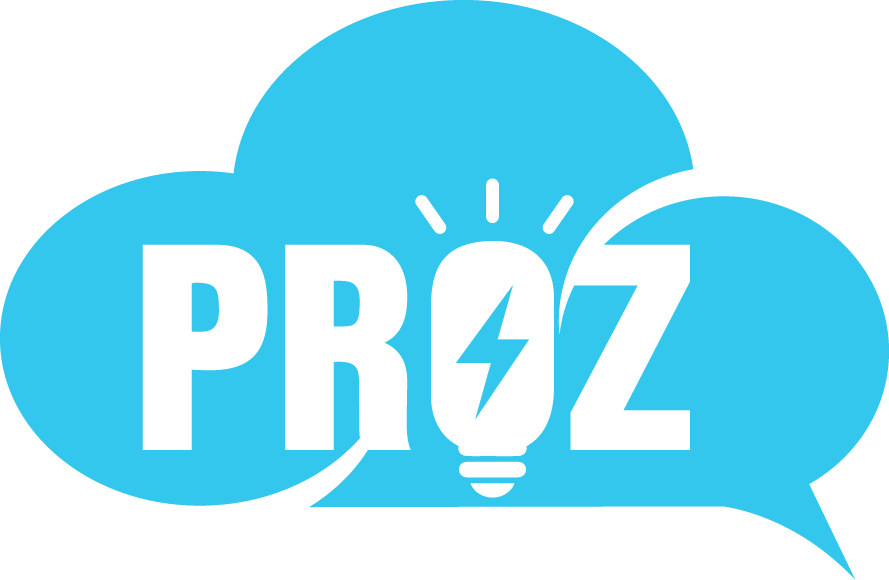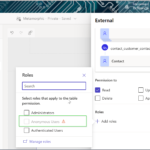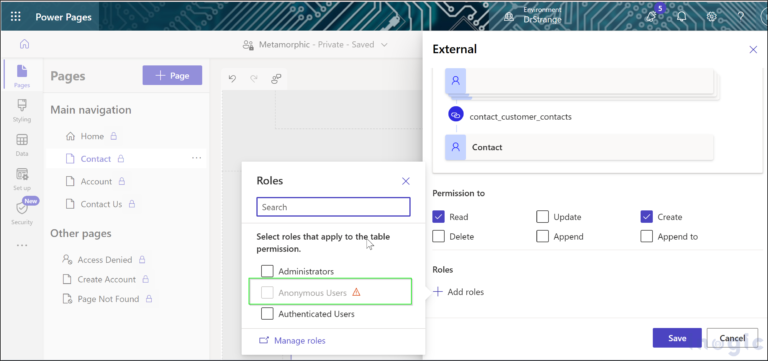Channel sales — or selling through partners — represents 75% of the world’s commerce, according to Forrester. This approach helps companies accelerate sales and grow revenue without adding to their headcount, a move that’s increasingly important during economic uncertainty.
Whether you’re launching a channel to scale more efficiently, tap into new markets, or meet customer needs, this guide can help. In it, you’ll learn the basics of channel sales and how it can work for you. For those already well-versed in working with partners, feel free to skip ahead to the sections most helpful to you.
What you’ll learn:
Empower your partners and grow
From personalized portals to AI-powered lead routing, see how Partner Relationship Management can help you.


What is channel sales?
In channel sales, companies (here we’ll call them vendors) sell through intermediaries. These intermediaries go by many names in different contexts: partners, resellers, dealers, distributors, brokers, agents, affiliates — the list goes on. This business model is also called indirect selling, because the company doesn’t have a direct connection to the end customer.
What is the difference between channel sales and direct sales?
While indirect sales uses a go-between, direct selling does not. Under a direct sales model, the brand sells straight to the end consumer. For instance, a brand might sell through its own retail store or its own website.
Many companies use a mix of direct and indirect sales. They may have customers who prefer buying through a channel (for example, a third-party retail store), while other customers might prefer buying from the manufacturer. Below are a few examples to help illustrate this point.
Channel sales types
- Affiliates. Affiliates are websites that get paid a commission to send customers to a merchant’s website. A makeup brand might use beauty bloggers or social influencers as affiliates to promote its lip gloss and bronzers online.
- Alliances. Alliances are partnerships with companies that sell complementary products. For instance, a cloud software company might provide enterprise storage in partnership with another tech company.
- Dealers. Dealers serve as an intermediary between customers and the manufacturer. Car manufacturers sell through dealerships.
- Distributors. Distributors buy directly from the businesses, then market and sell to customers in their operating regions. For instance, a beverage manufacturer sells directly to distributors, who then sell those products to stores and restaurants in a specific geographic area.
- Franchisees. Franchisees pay to use a brand’s identity, processes, and business model to sell that brand’s products or services. Some gyms license their brand to independently owned and operated franchise locations.
- Resellers or VARs. Resellers or value-added resellers (VARs) purchase existing products with the intention of reselling them, often adding features or services to enhance value. Many software companies sell through resellers or VARs.
- Independent brokers or agents. Brokers or agents arrange transactions in exchange for a commission. Insurance companies often sell through a network of brokers or agents who build relationships directly with customers. If the broker or agent represents a number of different insurance providers, they are considered independent.
- Retailers. Retailers sell goods to the public, often in small quantities. Condiment manufacturers typically sell through grocery stores or online retailers, not direct to consumer.
Benefits of a channel sales model
- Bigger network. Partners can introduce your brand to customers who aren’t in your existing circles and help you scale up sales faster than you could on your own.
- Access to new markets. Partners who know a specific niche or geographic area can help you expand into those areas.
- Built-in trust. When customers already know and trust your partner, the partner’s credibility benefits you, too.
- Amplified reach. Partners can magnify your marketing efforts with their own by hosting local events, driving webinar registrations, or providing onsite training with customers.
- Lower overhead. Indirect selling doesn’t involve a lot of the expenses you’d incur from direct selling, such as employee salaries, health insurance, office space, and mileage, because partners are not your employees.
- Customer satisfaction. Partnerships can round out your solution with complementary products or services. If your customers prefer to buy one complete experience, indirect selling allows you to better serve how they want to buy — without having to build it all yourself.
Drawbacks of a channel sales model — and how to counteract them
- Less control over customer experience. The partner represents your brand to the end customer, but you don’t control their interactions with customers. Still, when you provide an excellent partner experience, that often translates into an excellent customer experience, too.
- Less knowledge about customers. With indirect selling, the partner doesn’t always tell you who’s actually buying. One way around this is to use product registration. As soon as the end customer registers the product, it creates a direct connection between you and the customer. That way you can survey the customer to uncover unmet needs and ensure the partner provides a quality experience.
- Potential conflicts. When you use a hybrid of direct and indirect selling, sometimes your partners may feel like they’re competing with your own salespeople. Creating clear guidelines around what products are sold through the channel versus direct sales can minimize this issue.
Get articles selected just for you, in your inbox
How to develop and execute a channel sales strategy
Your channel strategy should align to your company’s overall sales strategy. To ensure this alignment, follow these steps:
1. Define your program’s purpose
This could be a mission statement that outlines what the program offers to partners and what you will do for them and with them. For example, you might say:
“Our partner program is designed to offer resellers and distributors the support and solution expertise they need at every step. We aim to provide our diverse partner network with the tools, technology, and personalized resources they rely on to better serve their customers, build loyalty, and accelerate revenue growth.”
You can display this statement on the public landing page of your partner portal so that potential partners understand what you’re all about. This statement should also guide decisions as the program grows.
2. Determine what kind of partner you need
When structuring your channel sales partnerships, first determine what type of partner(s) you need based on your goals. Here are some common partner types based on the goals you want to achieve:
Partners for sales reach: Maybe you don’t have enough salespeople in a particular market or region. Perhaps you want to break into a new vertical or industry. You’d want to find partners who have an existing reach in the market or industry you’re targeting.
Partners for delivery and implementation: Are you expecting accelerated growth or an uptick in demand? You might not have the manpower to deliver and implement at a faster pace, but partners could. Of course, you still have to get them recruited, trained, and certified, which doesn’t happen overnight. But looking ahead can help you anticipate this need.
Partners for solutions, support, and maintenance: Your product may do A and B, but the customer actually needs the solution to do A, B, and C. Partnering with another company that can actually deliver that third customer requirement allows you to meet this need more quickly than delivering that capability yourself. This can also extend to support and maintenance of your product or service.
3. Evaluate the value you bring to potential partners — and they to you
Get clarity on these key questions before contacting potential partners or inviting them to contact you.
What can you offer potential partners? Your partners will want to know what type of support you intend to provide, such as comprehensive training, access to sales and marketing tools, technical resources, a dedicated account manager, incentives, and rewards.
What’s your value proposition? Here’s your chance to convey the value of the opportunity. Why would a partner choose to do business with you? You might position your program as simple, lucrative, collaborative, or in high demand from their own customers.
What are your expectations of them? Understand what type of commitment you’re seeking from partners. Consider both partner engagement and partner performance indicators, like completion of training or certification, leads generated or converted, and total revenue brought in.
4. Hire a channel sales team
Your channel sales program needs dedicated staff to support it and your partners. Depending on the size of your company, these positions may be spread across many or a few individuals. Here are some of the key roles and responsibilities you’ll want to think about covering — along with key skills required for each.
Key roles and responsibilities for channel sales teams include:
Channel sales leader: Channel sales leaders are responsible for meeting partner revenue targets and overseeing a healthy sales funnel. They direct and oversee their organization’s channel sales strategy, policies, and initiatives. Besides needing a solid grasp of the indirect selling motion and partner ecosystem, channel sales leaders require strong business acumen and financial knowledge.
Channel account manager (CAM) or partner account manager (PAM): CAMs are on the front lines and own the relationships with partners, from onboarding to providing sales resources and support. CAMs are responsible for working with partners to build pipeline, so the ability to coach and motivate is critical. Ideally, CAMs will have experience as a reseller or channel partner, so they’ve been on the receiving end of vendor pitches, according to channel sales leader Marcus Cauchi.
Channel marketing manager: Channel marketers must be able to run two distinct types of marketing: In to-partner marketing, you engage current and prospective partners and communicate the value of doing business with you. In through-partner marketing, you’re creating materials and campaigns that partners use to market directly to your end customers. Channel marketers must be very clear on the value proposition of your products and services and how to position them effectively.
Channel operations or portal manager: Also sometimes described as partner program management, channel operations involves helping partners become productive and successful by building out scalable tools and processes. One important responsibility includes designing and managing the partner portal, where partners log in to access resources and workflows. Here, a focus on operational excellence, efficiency, and user experience is particularly useful.
5. Recruit channel sales partners
Once you’ve outlined your goals for partnering and structured your program accordingly, you can develop a short list of prospective partners by industry, geography, technical capabilities, and other factors. Make sure you pick the right partner based on capabilities, culture, and willingness to engage with you. The largest company isn’t always your best partner.
Two approaches to recruiting partners are:
Inbound recruitment: Inbound recruitment happens when potential partners come to you. For instance, you can set up a form on your website where potential partners can express interest in selling your products. Then, someone inside your company can vet the application and determine if the partner is a good fit. This can be a cost-effective way to grow your partner network, but you may need to supplement this with outbound recruitment to attract the right partners for your needs.
Outbound recruitment: Identifying and contacting partners proactively rather than waiting for them to contact you is another option. For instance, many vendors rely on events like trade shows to highlight their solutions and attract prospective partners. These initiatives can be time-consuming and costly, but may be effective in helping you find the ideal partners.
6. Onboard new channel sales partners
Remember that while new partners likely have industry experience, they may not know your product inside and out or understand how to make it relevant for each region, industry, or persona. That’s why partner onboarding is so important.
Onboarding also gives partners a first impression of your business and how easy it is to work together. Don’t wait for partners to request materials. Instead, guide partners through a step-by-step process and offer thorough training on sales must-knows, helping them ramp up more quickly. Investing in onboarding can pay off in future sales and long-term relationships with partners.
At a minimum, your onboarding program should get partners up to speed on the following:
- Products and features
- Pricing structures
- Selling processes
- Goals of the partnership
Personalize the partner experience with relevant content and recommendations. Onboarding should be trackable so you can see a partner’s progress over time. If a partner plans to sell one specific product, don’t overwhelm them with specs on other products that aren’t suitable for them.
For more about onboarding partners and personalizing the partner experience, check out this Trailhead module.
Trending Articles

3 Ways Generative AI Will Help Marketers Connect With Customers
3 min read

Skill Up on AI with Trailhead
6 min read
7. Support your channel partners
You’ve brought new partners up to speed and they’re off to the races. Now what? Partners need ongoing support throughout their involvement with your company. Below are some ways to show your support and set partners up for success.
Provide instant access to resources: In addition to onboarding materials, partners need just-in-time information to help them address specific customer issues. Partners may need access to product specs, marketing assets, pitch decks, or more. Making these resources available on demand empowers partners to be more productive and reduces the back-and-forth with internal channel managers.
Offer omnichannel support and peer groups: Be sure partners have chat, email, or phone support when questions arise. You can also consider offering a B2B social media community for partners, where they can find applicable success stories, ask questions of each other, and share best practices. This peer-to-peer community is potentially worldwide and always open 24 hours a day, which makes it more scalable than providing one-to-one partner support alone.
Offer market development funds: Market development funds (MDF) are discretionary monies vendors give to partners to execute marketing initiatives and generate future sales. Some vendors are very specific about how MDF can be used, while others give partners more latitude to spend it how they choose.
Provide prepackaged campaigns: Some partners don’t have a dedicated marketing department or resources, so offering them prebuilt campaigns, trade shows in a box, or brandable content makes it easier for them to market your offering. The other big benefit is that they’ll have professional-looking materials that align with your brand guidelines and standards.
8. Maintain strong relationships with your channel sales partners
Recruiting, onboarding, and supporting channel sales partners takes valuable time, money, and other resources. It’s a win-win for everyone when you foster meaningful, long-term relationships with partners. Here’s how to do that.
Launch a partner advisory board: Give select partners an active voice in your strategy. Create a board — either formally or informally — that you can tap into for feedback, ideas, and pilot testing new programs and technologies. You can even seek their input on the development of upcoming products based on what they’re hearing from customers.
Create a joint business plan: Keep partners — and yourself — accountable by aligning on yearly business plans. Set goals for each quarter and check back in with each other at a regular cadence to ensure both sides are delivering on their promises and collaborating effectively.
Co-invest in sales reps: Channel partners always want more salespeople, but those cost money. Your company could co-sponsor or co-invest in dedicated sales reps at your partner’s company. This can be very attractive to the partner, and give you reps who are very interested in your own product. You could stipulate that by paying for 50% or 75% of the rep, they will attend your training school or call X number of new leads per day.
Take responsibility for issues: When end customers have an issue with a partner, they often complain to the vendor. When that happens, do not throw partners under the bus, even if they were at fault. Instead, apologize to the customer and work with the partner to make things right. Customers expect partners to be an extension of your business, so working with the partner to resolve issues reflects positively on both of you.
9. Motivate channel sales partners
Most partners work with multiple vendors. They might carry dozens, hundreds, or even thousands of different vendors’ products and services — including your competitors’. That means you want to stay top of mind with partners and motivate them to sell your products. Here’s how:
Create a tiered incentive program: Salespeople tend to be driven and competitive, so creating performance levels for partners to attain can keep them engaged with your brand and excited to level up. Be transparent about the benefits of each level, such as better margins or other incentives. Use charts and dashboards so partners can monitor their progress and tap into their competitive spirit.
Celebrate partner success: Highlight both the big accomplishments and small wins of a variety of partners. Whether a mention in an email newsletter, a banner in your partner portal, or a speech at a partner summit, these shoutouts will make your partners feel proud and valued. Plus, the rest of your partners will be eager to see their own name in lights.
Know when to fold: Engaged and motivated partners can be your allies in selling. If you’ve provided onboarding and enablement resources, but the partner just isn’t engaged, it may be time to part ways. Do not allow a partner mismatch in expectations or engagement to suck up valuable time and resources you could be investing in more suitable partners.
10. Measure the success of your channel sales program
As the old adage goes, “you can’t manage what you can’t measure.” Measuring channel sales performance is key so that you and your partners know how they are doing, and you can make informed decisions to improve the business.
You might use metrics to identify your most strategic partners, so you know where to invest your resources. Your partners might use analytics to discuss where they need more support or training, or to benchmark where they stand against other partners.
Consider tracking and sharing these partner success metrics:
- Partner pipeline for the year
- Partner pipeline for the quarter
- Total revenue driven
- Partner leadership scoreboards
- Total marketing funds used for ROI
Remember, channel goals should be individualized to each partner and where they are in the enablement journey. They should also be tied to your own business goals.
Start your own channel sales program — and boost revenue
An effective channel sales program helps vendors, partners, and customers. By thinking through each step of the process — from recruiting to onboarding, all the way to managing and motivating partners — vendors can reap the long-term benefits of indirect selling.
Empowering partners is what we do best
Give your channel sales partners one tool to train and sell fast. That’s the magic of Partner Relationship Management.














